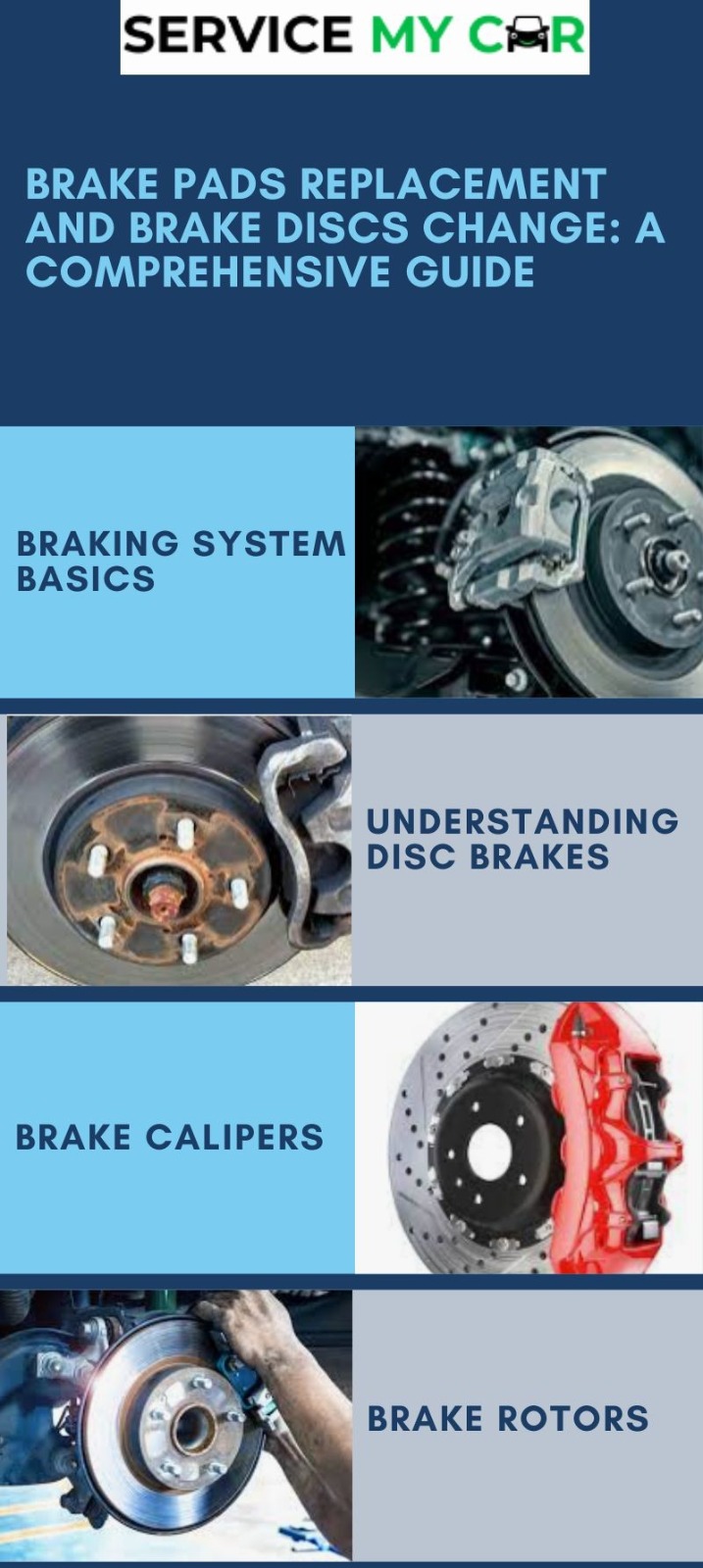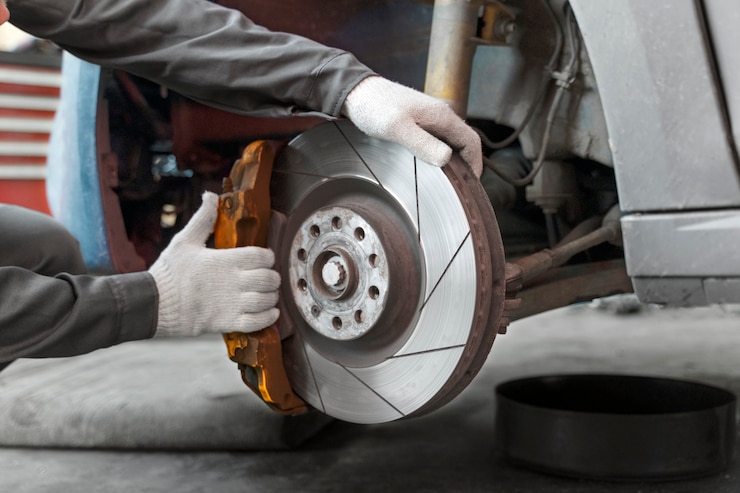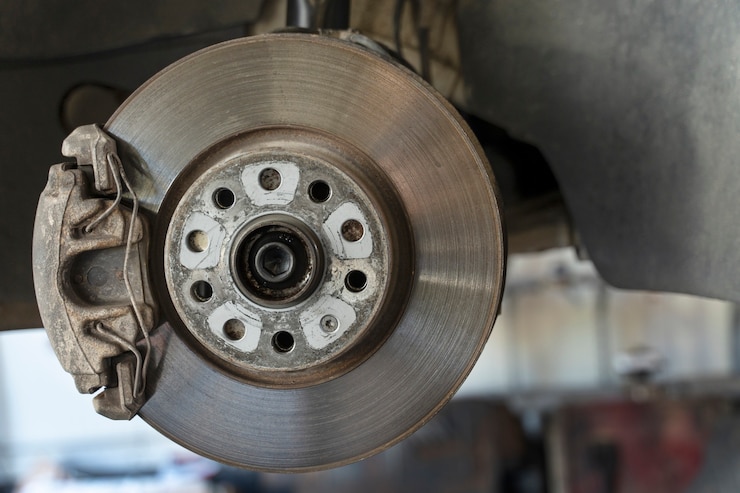
When it comes to vehicle safety, the braking system plays a significant role. Ensuring that your brake pads and brake discs are functioning optimally is crucial for your safety and the safety of others on the road. This comprehensive guide will provide you with all the information you need to know about brake pads replacement and brake discs change, as well as the importance of regular maintenance.
1. Braking System Basics
Both disc and drum brakes operate on a hydraulic pressure system. The braking process begins with a mechanical force, which is your foot pressing the brake pedal. This force is then transformed into hydraulic pressure through various components, ultimately resulting in your vehicle coming to a stop. The five primary components of a braking system are the master cylinder, brake fluid, brake lines and hoses, disc brake assembly, and drum brake assembly. These components work together to create friction, which converts kinetic energy into heat and stops your vehicle.

2. Understanding Disc Brakes
Disc brakes are commonly found on most modern vehicles and are mounted on the front and/or rear axle. The primary components of a disc brake system include the brake caliper, brake pads, and brake rotor. When you apply the brakes, the caliper squeezes the brake pads against the rotor, creating friction and slowing down the wheel.

2.1 Brake Calipers
Brake calipers are assemblies mounted to the vehicle with a bracket, framing the rotor and functioning like a c-clamp. They contain brake pads, one or multiple pistons, a bleeder screw, a rubber piston seal, a dust boot, and anti-rattle clips.
2.2 Brake Rotors
The brake rotor is made of cast iron or a steel/cast iron composite and is attached to the wheel hub. When the brake pads press against both sides of the rotor, friction is created to stop the wheel’s rotation.
3. Understanding Drum Brakes
Drum brakes are typically used on the rear axle of some vehicles and are common on trailers. Instead of brake pads, drum brakes use a wheel cylinder with pistons that push brake shoes against the inside of a spinning drum. When this contact occurs, the rotation of the brake drum and wheel slows, stopping your vehicle.

4. Disc vs. Drum Brakes
Many of today’s vehicles have disc brakes on all four wheels, while some still have disc brakes on the front axle and drum brakes on the rear. Disc brakes are generally more effective for stopping due to the weight distribution in most vehicles. The front of a vehicle is typically heavier, requiring more braking power, which is provided by disc brakes. In case, you are looking for a trusted car garage for car ac fan replacement, we would like to suggest you Service My Car, the best and trusted car workshop in the town.

5. Brake Pads and Brake Discs: Signs of Wear
It’s essential to recognize the signs that your brake pads and brake discs may need
replacement. Common indicators include:
- Squealing or screeching noise
- Grinding noise
- Warning light on the dashboard
- Car pulling to one side
- Vibrations when braking
- Decreased brake responsiveness

6. How Often Should You Replace Brake Pads and Brake Discs?
There is no set timeframe for brake pads replacement and brake disc change, as it depends on factors such as your vehicle, driving style, climate, and road conditions. However, it’s crucial to have your brakes checked regularly to ensure proper functioning and avoid potential damage to other parts of your vehicle.

7. Types of Brake Pads and Brake Discs
There are various types of brake pads and brake discs available, each with its characteristics and benefits. Some common types of brake pads include organic, semimetallic, and ceramic. Brake discs can be solid or vented, with vented rotors having a larger surface area for better heat dissipation.

8. Brake Pads Replacement Process
Replacing brake pads involves the following steps:
- Safely lift and secure the vehicle.
- Remove the wheel.
- Remove the caliper and support it to avoid damaging the brake line.
- Remove the old brake pads.
- Clean and inspect the caliper and related components.
- Install the new brake pads.
- Reinstall the caliper.
- Reinstall the wheel and lower the vehicle.
- Test drive to ensure proper brake function.

9. Brake Discs Change Process
Changing brake discs involves the following steps:
- Safely lift and secure the vehicle.
- Remove the wheel.
- Remove the brake caliper and support it.
- Remove the old brake disc.
- Clean and inspect the wheel hub and related components.
- Install the new brake disc.
- Reinstall the brake caliper.
- Reinstall the wheel and lower the vehicle.
- Test drive to ensure proper brake function.

10. Tips for Prolonging the Life of Your Brake Pads and Brake Discs
To extend the life of your brake pads and brake discs, consider the following tips:
- Drive smoothly and avoid sudden stops.
- Use engine braking when possible.
- Regularly inspect your brakes for wear and damage.
- Replace brake fluid and maintain proper levels.
- Keep your vehicle’s weight within its specified limit.

By following these tips and performing regular maintenance, you can ensure that your brake pads replacement and brake discs change are done at appropriate intervals, keeping your vehicle safe and efficient on the road.

